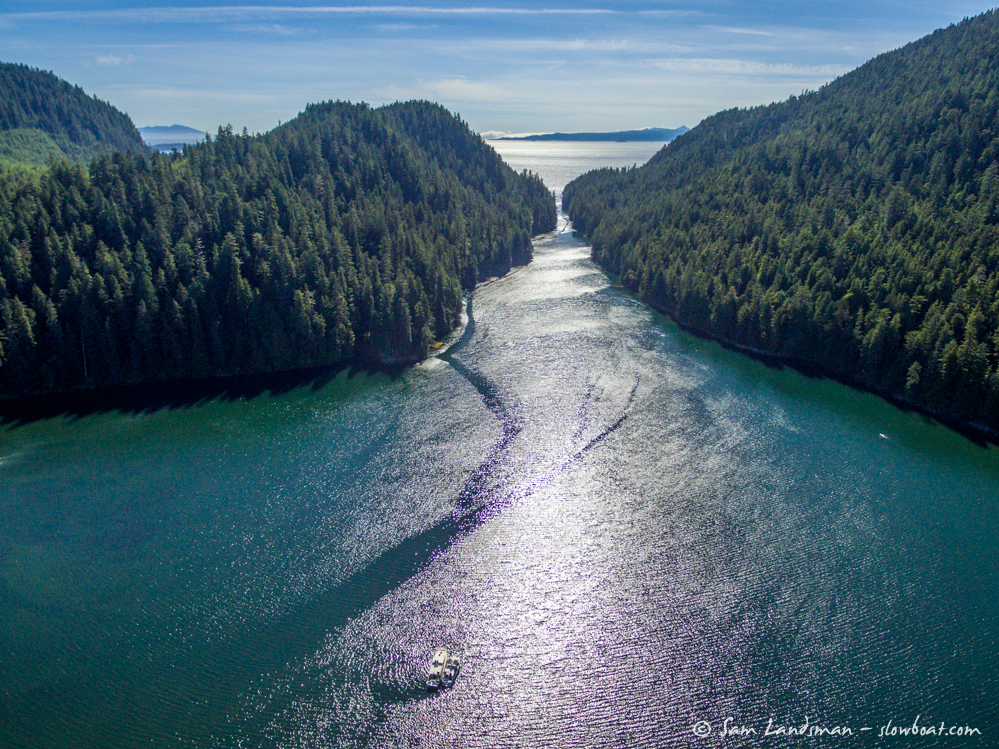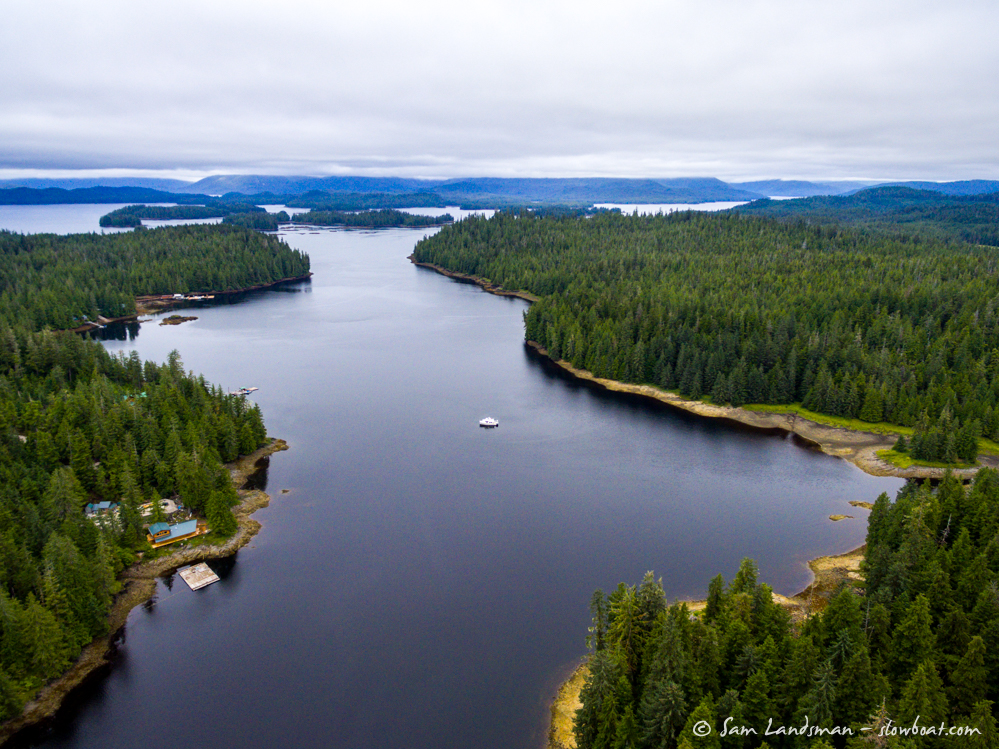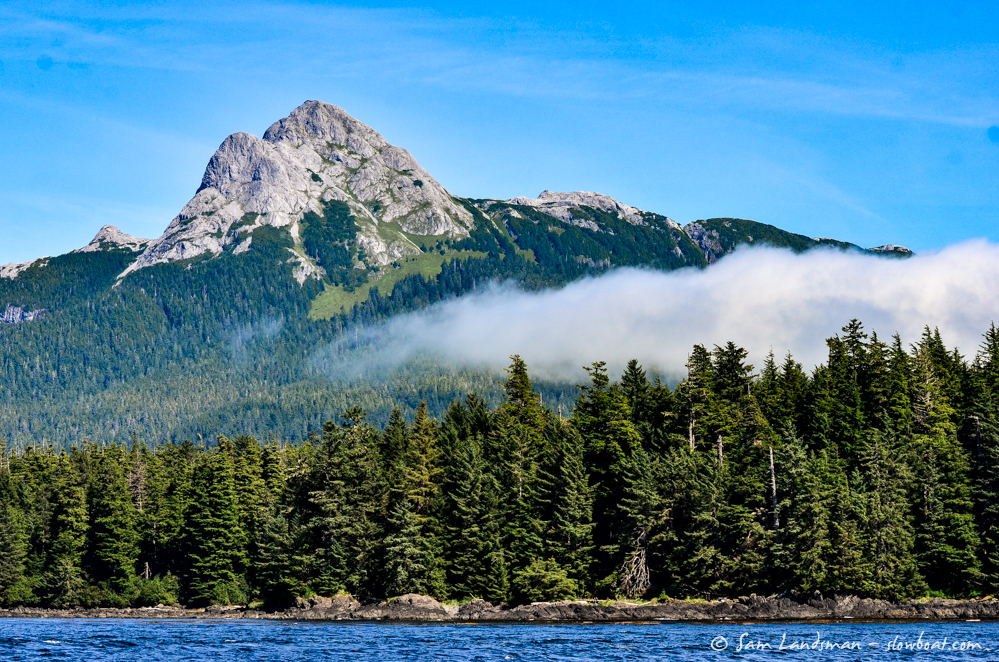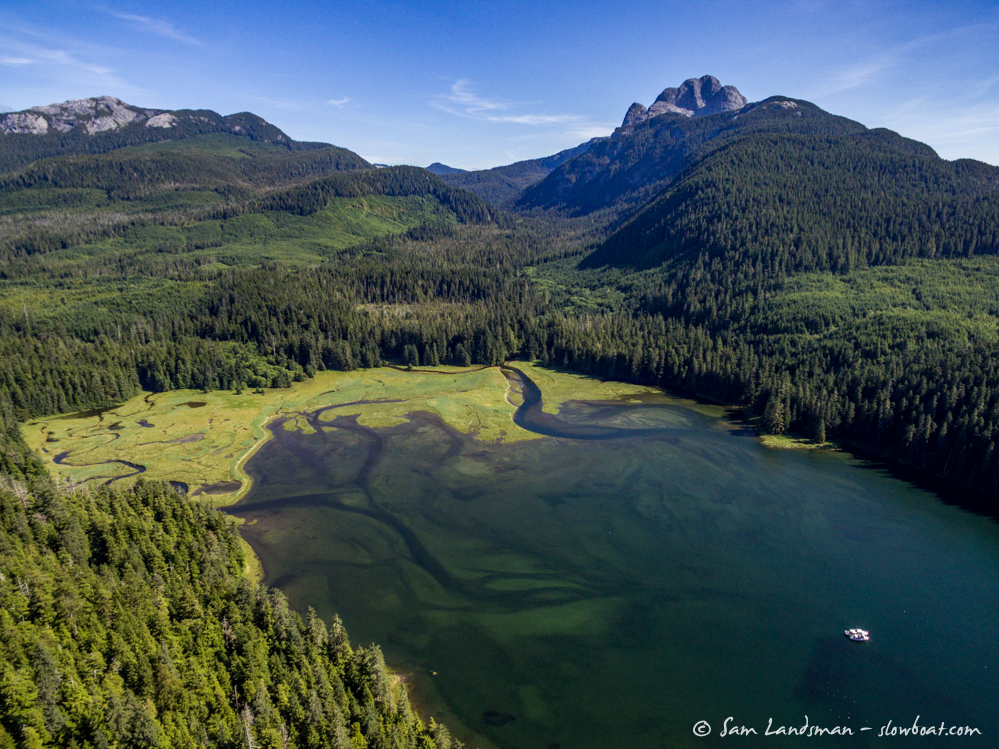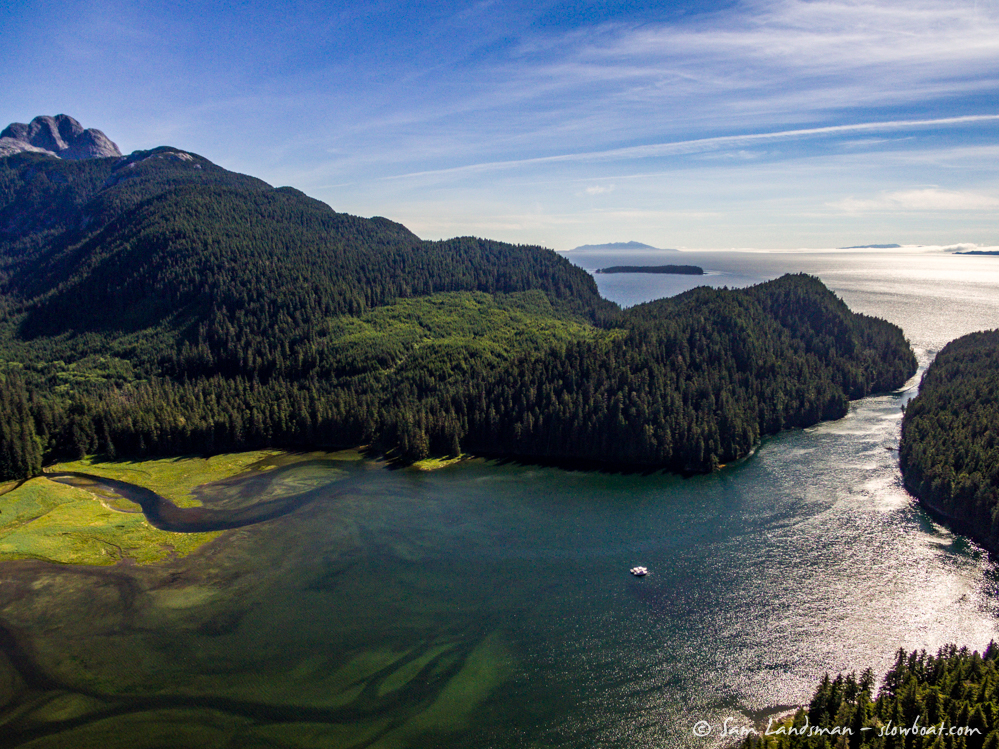Our first stop north of Klawock was Sarkar Cove. It’s a pretty spot with good holding and protection, but several houses and a high-end fishing lodge make it feel less remote than it otherwise would. The biggest attraction was Sarkar Lake, which flows into Sarkar Cove and looked like a great place to explore by dinghy.
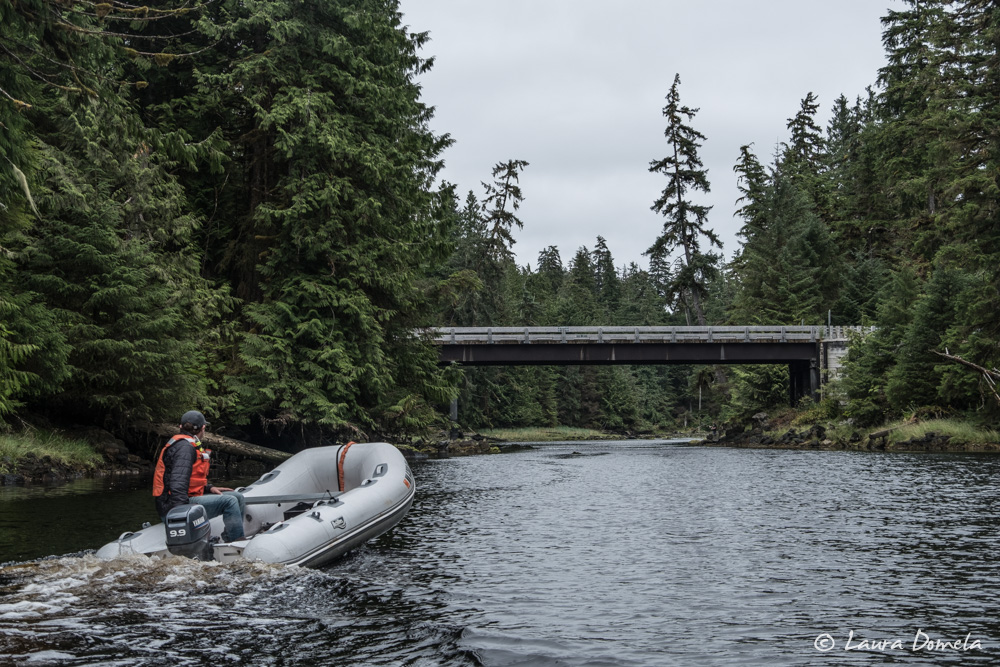
Unfortunately, we didn’t make it far. Soon after the bridge, we came to this series of rocks and couldn’t find a route through:
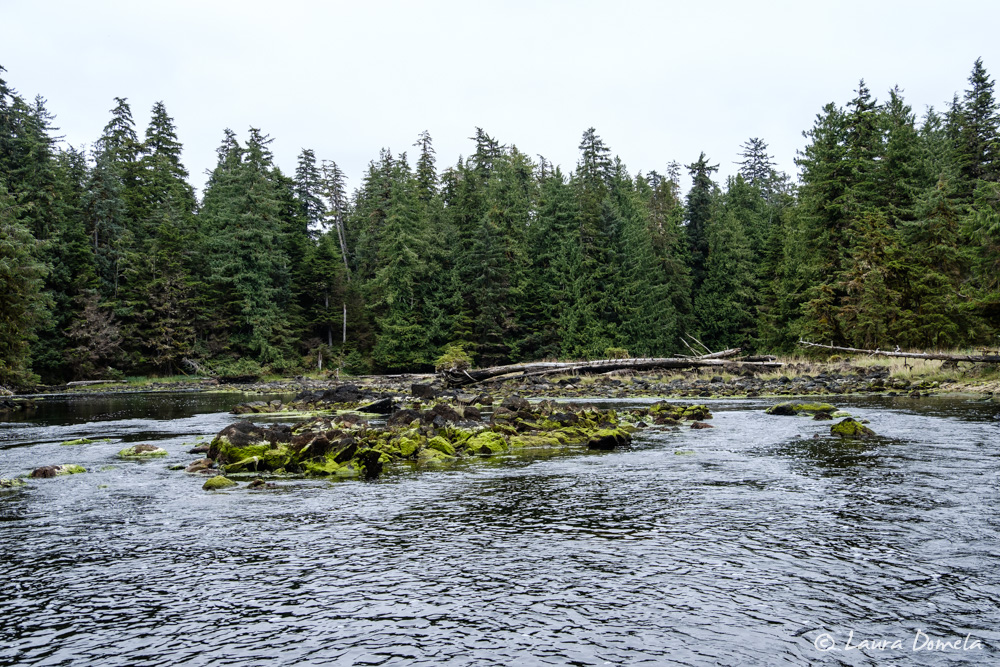
Not ready to return to the boats, we zoomed north to Tunga Inlet. This inlet is shallow and rocky, not well suited to visiting in a cruising boat, but the lagoon at the head of the bay beckoned. The tide was falling and rapids guarded the entrance. It took us a few attempts, but eventually, we found a channel into the lagoon.

From Sarkar Cove we continued north. We cruised through Devilfish Bay but didn’t stop for the night since there was already a boat at anchor. Yes, we’re that spoiled…if there’s another boat, we move on.
We’d hoped to visit El Capitan Cave, the largest cave in Alaska, but the schedule didn’t work out. The Forest Service only runs tours Thursday through Sunday, and we passed by on a Tuesday. Guess we’ll have to come back next year!
Then we transited El Capitan Passage, which connects the protected inside waters on the west side of Prince of Wales Island to Sumner Strait. It’s a very narrow, shallow, winding waterway—well marked and well charted, but requiring precise navigation. Our transit was uneventful, but several places are so narrow that it would be impossible to turn the boat around. Fun as long as you don’t venture a few feet out of the channel!
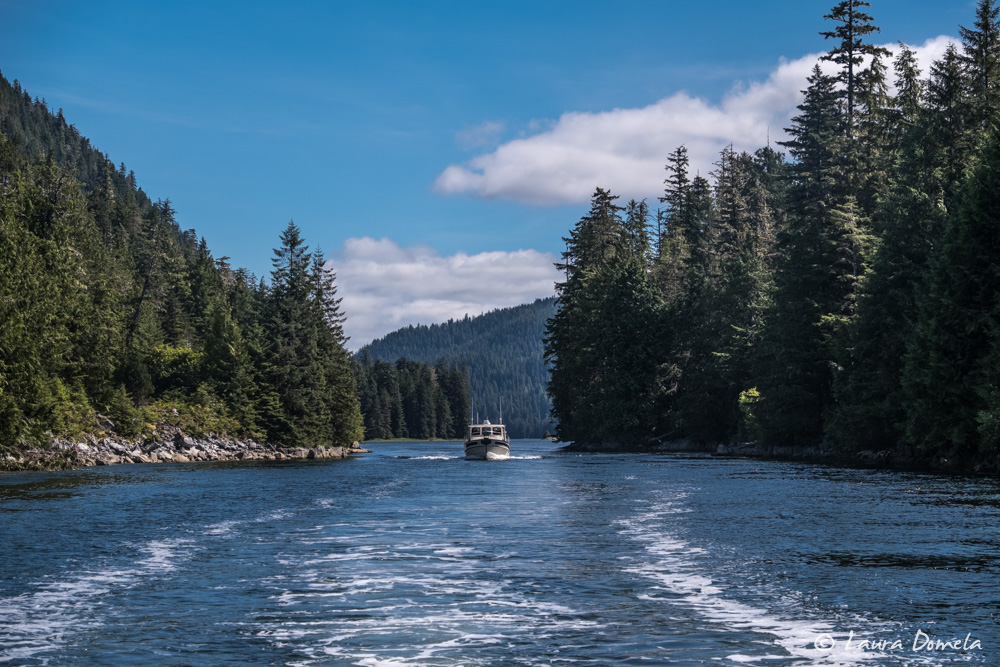
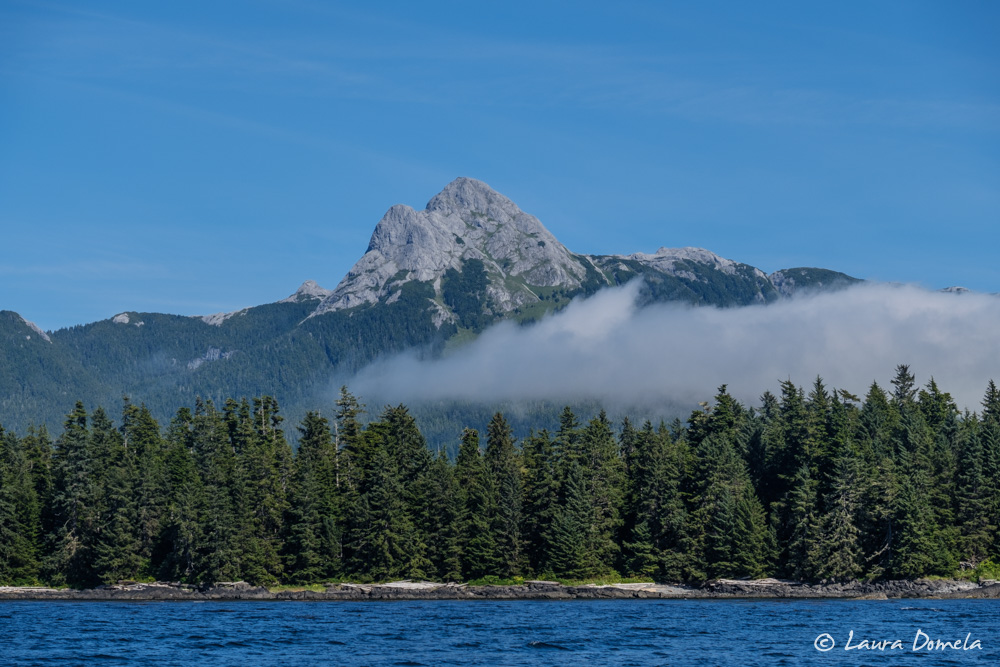
Our destination for the day was aptly-named Hole in the Wall. The entrance is impossible to see until you’re right there. We entered on a 10-foot tide and never saw less than 17 ft beneath the keel, but the channel is narrow and intimidating. Inside, we found a big, beautiful anchorage, although the mudflat is larger than charted and shoals abruptly. The views of the large intertidal zone (only one bear!) nearby and granite mountains in the distance are gorgeous.
After dinner we took a dinghy and a depth finder out to the entrance to get a feel for where the rocks were at a lower tide. Low tide (-1.2 feet) the following morning was about 8:00 a.m., so we wanted to be sure about depths before committing to a departure. The channel is mostly free of uncharted hazards, except for one rock jutting south from the north wall, about midway through the narrowest section. Favoring the south shore is preferred.
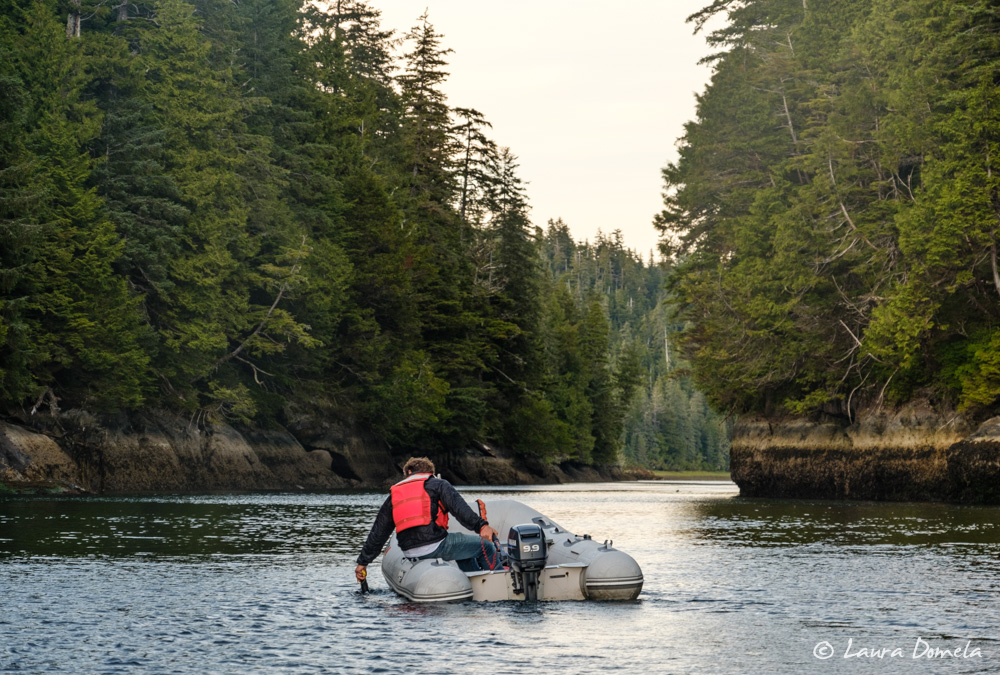
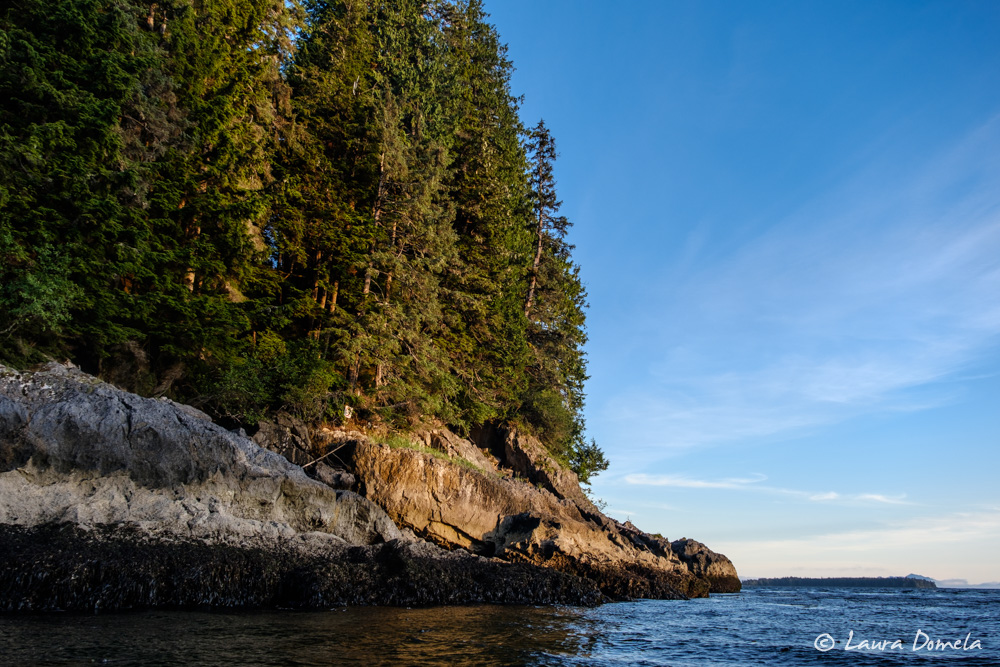
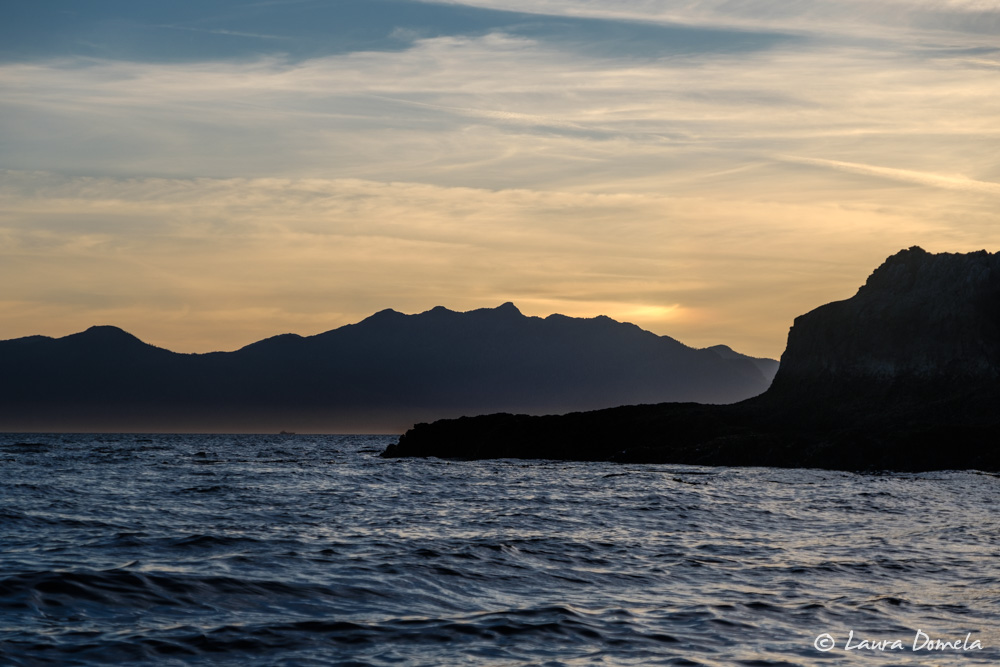
In the morning, the “hole” part of where we were was clear but the “wall” and beyond was super foggy. Slowly though, the fog burned off.
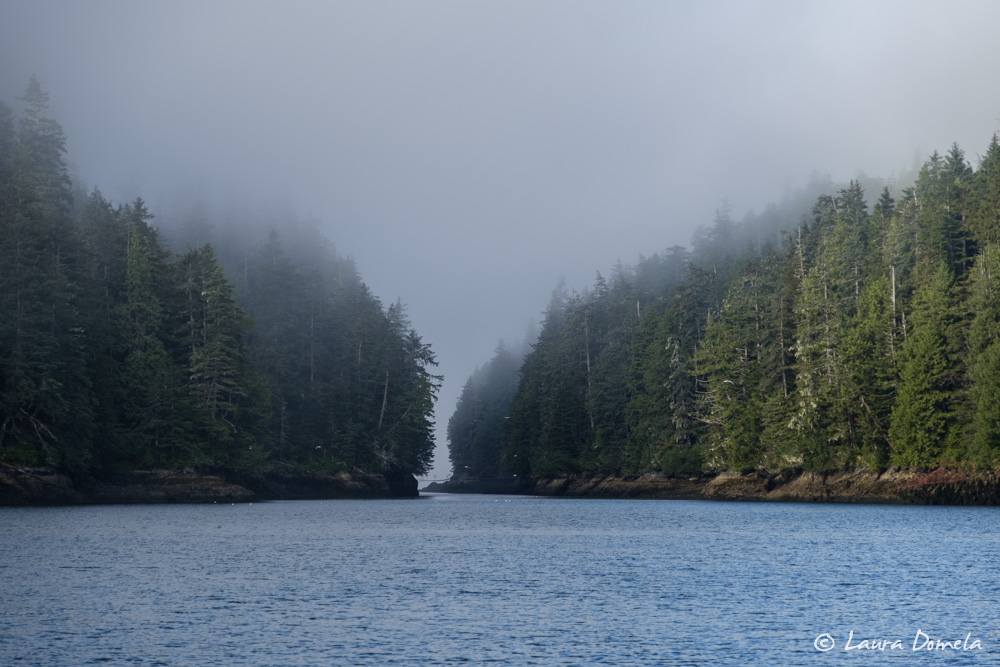
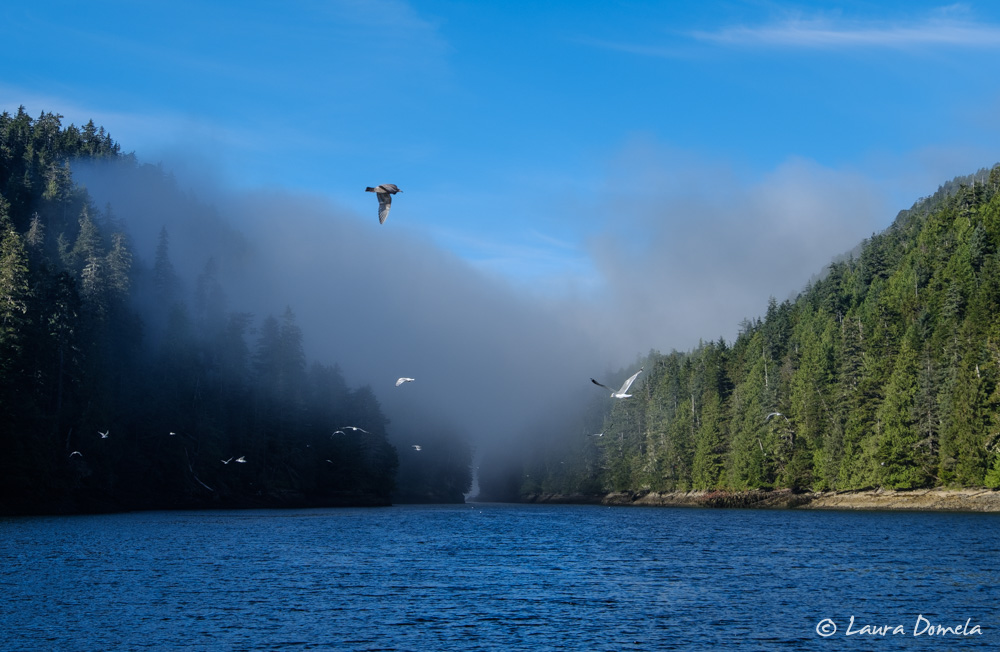

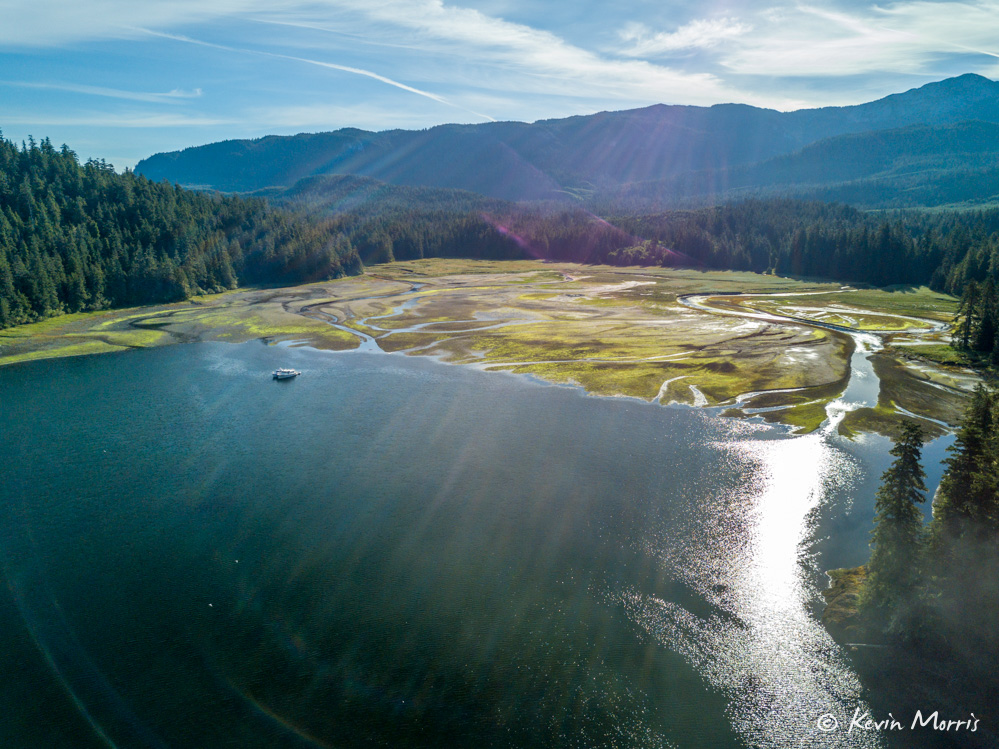
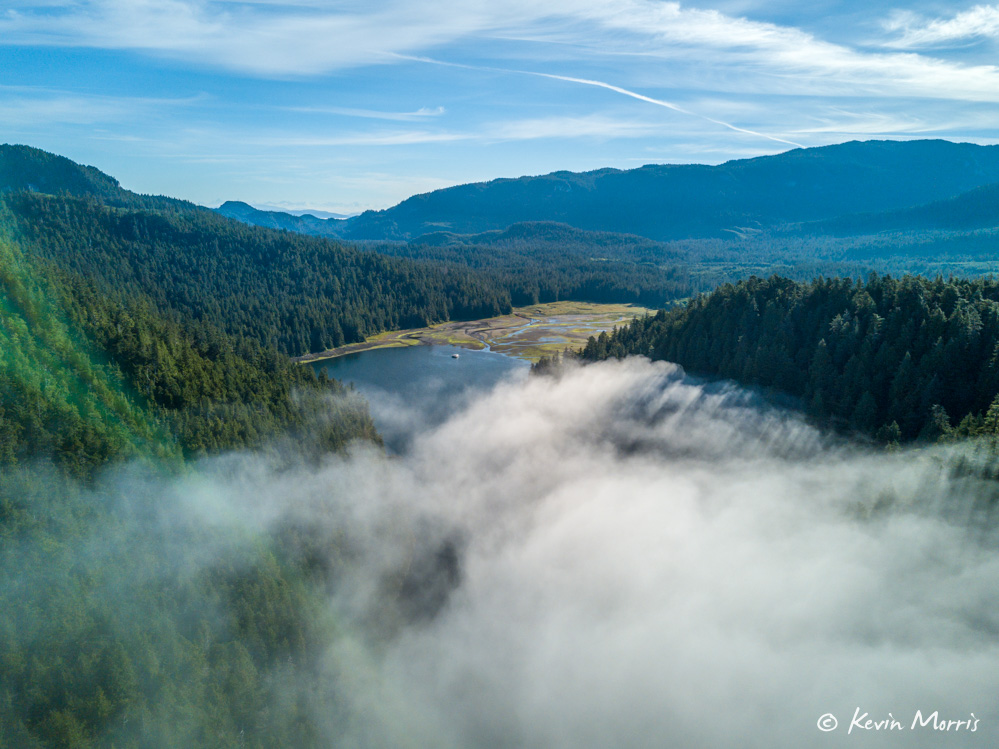
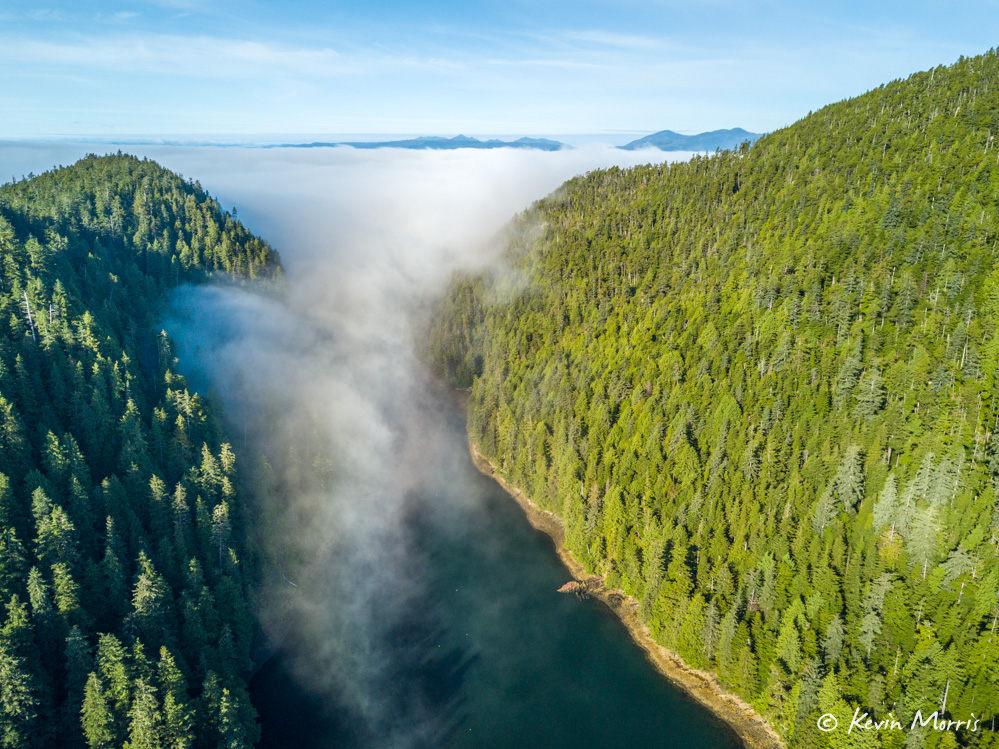
Around 11:00 a.m. we went back out with the dinghy to check depths in the channel. We didn’t see anything less than 14 feet and made it out easily. Next stop: Port Protection and Point Baker.

